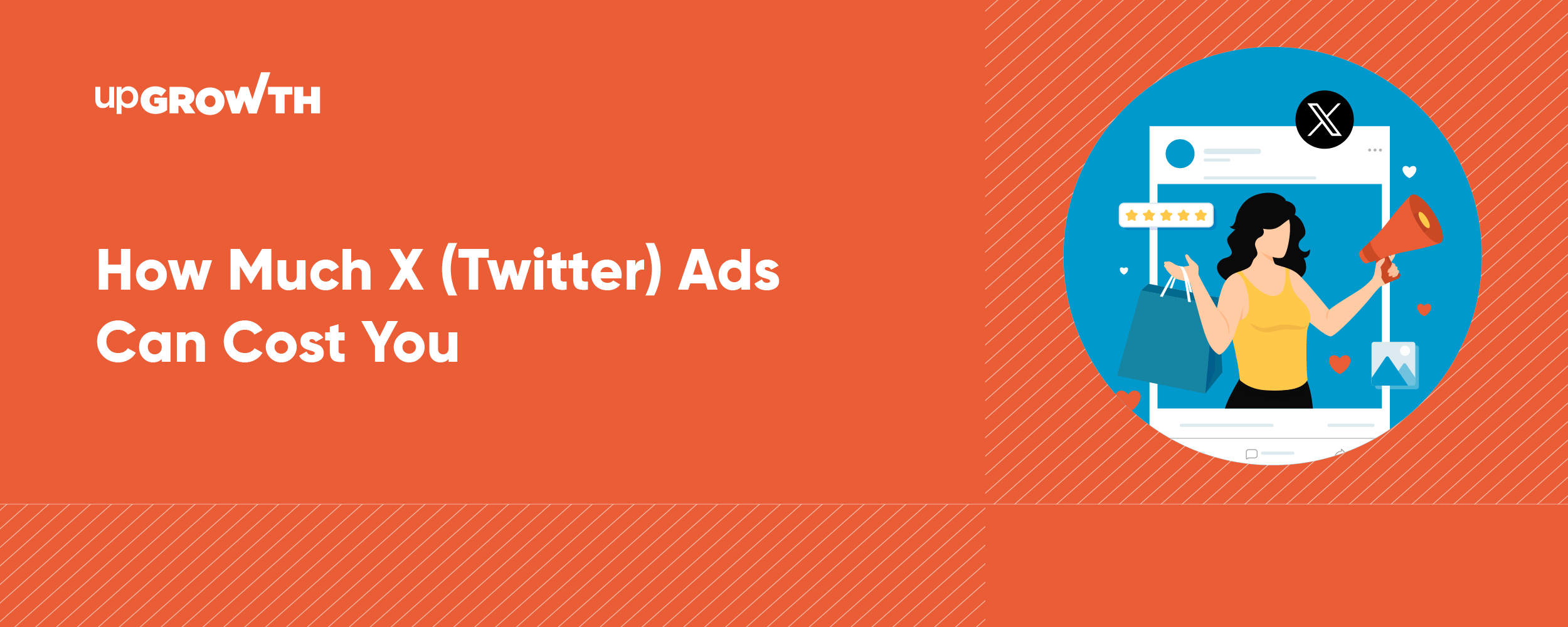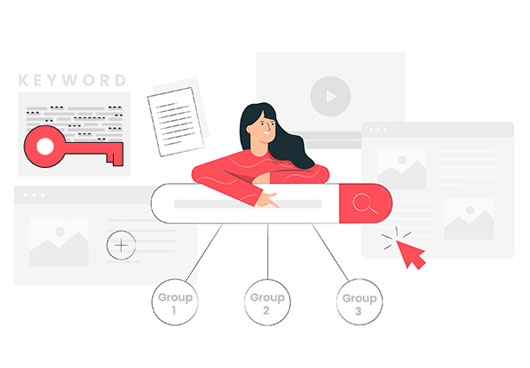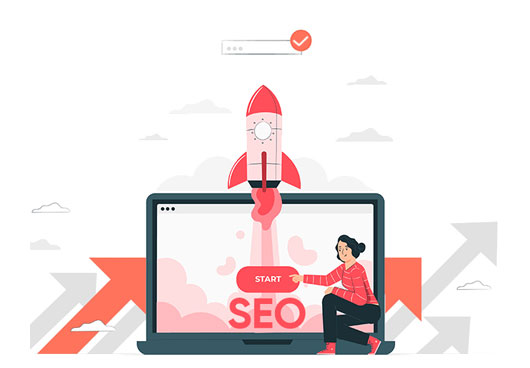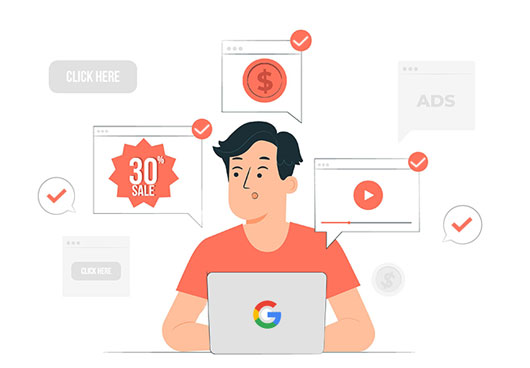How Much X (Twitter) Ads Can Cost You
Contributors:
Amol Ghemud
Published: January 9, 2024

Summary
Let’s delve into the cost dynamics of Twitter (now referred to as X) advertising, outlining factors that influence ad costs, different ad formats, and strategies for budget optimization. This article is a comprehensive guide to understanding and managing advertising expenses on the platform, offering insights into bidding strategies, average cost ranges, and tips for maximizing ad campaign effectiveness.
The chirping world of Twitter (Now ‘X’ so maybe not very chirping) isn’t just for viral memes and breaking news anymore. It’s become a thriving ad landscape, buzzing with brands fighting to reach its diverse and engaged audience.
But for businesses dipping their toes into the X (Twitter) ad pool, one question often echoes loudest: “How much do Twitter ads cost” – just how much does it set you back to join the conversation?
Well, the answer, like many things in marketing, isn’t a simple tweet-sized “140 characters or less.” Twitter ad costs are as varied as the trending topics themselves, shaped by a multitude of factors that dance alongside the algorithm.
But worry not, curious minds! This blog is your decoder ring, unscrambling the mysteries behind ads on X (Twitter) and their ever-shifting price tags.
Types of X (Twitter) Advertising
Before diving into the Twitter ads cost whirlpool, let’s get acquainted with the platform itself. Imagine a vibrant marketplace where over 450 million monthly active users gather, forming communities around every imaginable niche.
From tech enthusiasts to fashionistas, sports fanatics to foodies, X (Twitter) offers a unique chance to connect with highly targeted audiences.
But how do you make your voice heard in this cacophony? X Ads typically include several formats such as:
1. Promoted Ads
Promoted Ads are standard posts that advertisers pay to promote to a wider audience. These are essentially the same as regular posts on the platform but are labeled as “Promoted” to indicate their paid nature. Promoted Ads can be interacted with just like any organic content, allowing actions such as likes, reposts, replies, and more. This format is versatile and can include text, images, or videos.Here’s a detailed overview of the types of Promoted Ads available:
Text Ads are simple yet effective, allowing advertisers to convey their message directly through text. These ads usually support up to 280 characters and are similar in appearance to regular posts on the platform. They’re designed to expand the reach of textual content beyond the advertiser’s follower base to a broader targeted audience.
Image Ads involve a single photo or a series of images to visually engage the audience. These ads are effective for showcasing products, branding visuals, or any creative that benefits from visual representation. They can be interacted with just like regular posts (liked, replied to, reposted), and they’re clearly marked as “Promoted.”
Video Ads capture attention with dynamic content. These ads allow advertisers to tell stories or demonstrate products in action, making them particularly engaging and memorable. Specifications for video ads include limits on file size, length, and recommendations for branding placement to ensure effectiveness.
Carousel Ads feature multiple images or videos that users can swipe through. This format is ideal for showcasing a collection of products, telling a sequential story, or providing detailed information about a promotion. Carousel ads leverage the interactive nature of swiping to keep users engaged with the content.
Moment Ads allow advertisers to create, curate, and promote a collection of posts to tell an immersive story. These are particularly effective for comprehensive campaigns that go beyond a single message, offering a narrative or a series of insights into a product, service, or event.
Specialized Features in Promoted Ads:
- Polls: Some Promoted Ads can include interactive polls, engaging the audience by asking them to vote on specific aspects related to the ad content.
- Conversation Buttons: These are included in some ads to encourage user interaction by prompting them to post about the brand or topic, using customizable hashtags and call-to-action phrases.
Each type of Promoted Ad serves different purposes and can be selected based on the specific goals of a campaign. Whether aiming for direct engagement, broad awareness, or interactive feedback, the diverse formats of Promoted Ads provide advertisers with a variety of tools to reach and influence their target audiences effectively.
2. Follower Ads
Follower Ads aim to increase an advertiser’s followers by promoting their account to targeted users who might be interested in the content but are not yet following the account. These ads typically appear in strategic locations within the platform, such as in feed suggestions or in the “Who to Follow” sections, and are labeled to indicate their promotional nature.
3. Trend Takeover
Trend Takeover ads offer advertisers a chance to dominate the conversation around trending topics. These ads are prominently displayed at the top of the trending section or within the search results related to a trending topic. This type of ad is particularly useful for maximizing visibility during major events or promotional periods and is designed to drive engagement and conversation.
What are the Factors Influencing X Ad Costs
The cost of X Ads, like most digital advertising platforms, can be influenced by several key factors. These factors determine the overall effectiveness and efficiency of your advertising spend. Understanding these factors can help advertisers optimize their campaigns to get the best possible return on investment. Here’s a detailed look at the primary factors that influence X Ad costs:
1. Bidding Strategy
X Ads typically operate on a bidding system, where advertisers set a maximum amount they are willing to pay for their ads to be shown or interacted with. Advertisers can choose from different bidding strategies such as cost-per-click (CPC), cost-per-impression (CPM), or cost-per-action (CPA). The choice of bidding strategy and the competitiveness of the bid can significantly impact ad costs.
2. Ad Quality and Relevance
Platforms often use a quality score or a similar metric to determine how relevant and useful an ad is to the audience it’s shown to. Ads that are deemed more relevant not only cost less to deliver but also generally perform better. This relevance is determined by factors like engagement rates, click-through rates, and overall user feedback.
3. Target Audience
The specificity and size of the targeted audience can affect ad costs. Targeting a highly specific or niche audience often costs more due to the limited size of the audience and increased competition among advertisers for the same demographic. Conversely, broader audiences might be cheaper to target but could lead to lower engagement rates.
4. Competition
The level of competition for ad space within a given target audience or industry can drive up costs. High-demand periods, such as holidays or major events, can also see increased competition and therefore higher costs. Understanding when your audience is most accessible with the least competition can help in planning budget allocations.
5. Ad Placement
The cost of X Ads can vary depending on where the ads are placed on the platform. For example, ads appearing in high-visibility areas like the top of news feeds or prominent positions within trending topics may cost more than those placed in less prominent positions.
6. Time of Year
Advertising costs can fluctuate throughout the year based on seasonal demand. Retail businesses, for instance, might face higher costs during the holiday shopping season due to increased overall advertising activity.
7. Campaign Duration and Timing
The duration of your campaign and the specific times when ads are run can influence costs. Running ads during peak user times may lead to higher costs due to increased competition, while off-peak times might offer cost savings.
8. Geographic Location
Targeting users in specific geographic locations can also affect costs. Advertisers targeting urban areas or high-income regions may face higher costs due to increased competition and higher market value.
9. Ad Format
Different ad formats may incur different costs. For example, video ads generally cost more than text or image ads due to their higher user engagement rates and production costs. Similarly, interactive ads or those with advanced features like augmented reality might also carry a premium.
By carefully considering these factors, advertisers can more effectively manage their ad spend, optimize their campaigns for better performance, and achieve a higher return on investment. Understanding the dynamics of ad costs on the X platform is crucial for strategic planning and maximizing the effectiveness of your advertising efforts.
Strategies to Optimize Twitter Ad Costs
Optimizing X Ad costs effectively requires a strategic approach to managing your campaigns. By fine-tuning various elements of your advertising strategy, you can maximize return on investment, reach the right audiences, and minimize costs. Here are key strategies to consider when looking to optimize your X Ad costs:
1. Define Clear Objectives
Before launching a campaign, clearly define your advertising goals. Whether it’s increasing brand awareness, driving website traffic, or generating sales, having a clear objective helps you choose the right ad format and bidding strategy, which can significantly impact cost efficiency.
2. Use Targeting Wisely
Target your ads to the right audience by using demographic, geographic, and behavioral data. However, balance between being too broad and too narrow:
- Too Broad: May lead to wasted impressions on uninterested users.
- Too Narrow: Can drive up costs due to high competition for a small audience.
Experiment with different targeting options to find the sweet spot that offers good reach without excessive costs.
3. Optimize Ad Creative
Ensure your ad creatives are engaging and relevant to the audience:
- A/B Testing: Regularly test different versions of your ads (images, headlines, call to action) to see what performs best.
- Quality Content: High-quality, relevant ads tend to receive better engagement, which can improve your ad score and potentially lower costs.
4. Choose the Right Bidding Strategy
Understanding different bidding options can help you manage costs:
- Cost-Per-Click (CPC): Good for driving traffic.
- Cost-Per-Impression (CPM): Suitable for brand awareness.
- Cost-Per-Action (CPA): Best for conversions.
Experiment with different bidding strategies to see which provides the best ROI for your specific goals.
5. Monitor and Adjust Bids
Regularly review the performance of your campaigns. If certain ads perform well, consider increasing the bid to maximize visibility. Conversely, lower the bid if an ad doesn’t meet performance expectations to reduce costs.
6. Use Ad Scheduling
Run ads during times when your target audience is most active to increase the likelihood of engagement. Use platform analytics to determine peak times for your audience and schedule your ads accordingly to improve efficiency.
7. Manage Your Budget Effectively
Set daily or lifetime budgets for your campaigns to control overall spending. Use pacing (the rate at which your budget is spent) to ensure you don’t run out of budget too early in the campaign period.
8. Leverage Retargeting
Retargeting allows you to show ads to users who have already interacted with your brand. Since these users are more likely to convert, retargeting can be more cost-effective compared to targeting new users.
9. Analyze and Optimize Based on Analytics
Use analytics tools provided by the X platform to track the performance of your ads. Analyze metrics like click-through rate, conversion rate, and cost per action to identify what works and what doesn’t, then refine your campaigns accordingly.
10. Continuous Learning and Adaptation
Stay updated with the latest trends and changes in ad policies and algorithms. Platforms often update their advertising systems, which can affect how your ads perform and how much they cost.
By implementing these strategies, you can optimize your advertising spend on the X platform, ensuring that your campaigns are not only cost-effective but also successful in achieving your marketing objectives.
Conclusion
In conclusion, diving into the world of X (Twitter) advertising offers a wealth of opportunities for brands to connect with a diverse and engaged audience. From Promoted Ads to Trend Takeovers, the platform provides a range of ad formats designed to meet various campaign objectives. However, navigating the costs associated with these ads requires a strategic approach influenced by factors such as bidding strategies, ad quality, audience targeting, and seasonal demands. By embracing best practices such as optimizing ad creatives, choosing the right bidding strategy, and leveraging analytics for continuous improvement, businesses can effectively manage their advertising spend, ensuring they not only capture attention but also achieve substantial returns on their investment. With this definitive guide, brands are well-equipped to optimize their X (Twitter) ad costs and make a significant impact in the chirping digital marketplace.
FAQs
1. What factors influence the cost of X (Twitter) ads?
The cost is affected by several factors including bidding strategy, ad quality and relevance, the specificity of the target audience, level of competition, ad placement, time of year, campaign duration, geographic location, and ad format.
2. How can I minimize my X ad spending while maximizing results?
To minimize spending and maximize results, clearly define your campaign objectives, use targeted advertising wisely, optimize your ad creatives through A/B testing, choose the right bidding strategy, monitor and adjust your bids, schedule ads for optimal times, and leverage retargeting strategies.
3. What are the different types of X ads available?
X offers several ad formats including Promoted Ads, Follower Ads, Trend Takeover, Text Ads, Image Ads, Video Ads, Carousel Ads, and Moment Ads, each with unique features and use cases.
4. How does the bidding strategy affect X ad costs?
Your chosen bidding strategy (CPC, CPM, CPA) influences how much you pay for ads, depending on what you are optimizing for—clicks, impressions, or specific actions.
5. Can I control how much I spend on X ads?
Yes, you have complete control over your advertising spend by setting daily or lifetime budgets and by using the pacing feature to manage how quickly your budget is spent throughout the campaign.
6. What is the best way to target my ads on X?
The best targeting strategy involves a balance of reaching a broad enough audience to ensure ad visibility while being specific enough to engage users genuinely interested in your offer. Utilize demographic, geographic, and behavioral data to refine your targeting.
7. How do I know if my X ads are performing well?
Utilize X’s analytics tools to track performance indicators such as click-through rates, conversion rates, and cost per action. Regularly reviewing these metrics will help you understand the effectiveness of your ads and guide optimization efforts.
Read More:
How Much Do YouTube Ads Cost in India
Website Design Cost Guide in India 2024
Social Media Marketing Pricing: Cost of SMM
How Much Do Instagram Ads Cost
Digital Marketing Pricing: How Much Does it Cost
About the Author
Optimizer in Chief
Amol has helped catalyse business growth with his strategic & data-driven methodologies. With a decade of experience in the field of marketing, he has donned multiple hats, from channel optimization, data analytics and creative brand positioning to growth engineering and sales.
 Growth Strategy and Planning
Growth Strategy and Planning Inbound Growth
Inbound Growth Growth Hacking
Growth Hacking Search Engine Optimization
Search Engine Optimization Paid and Performance Marketing
Paid and Performance Marketing Social Media Marketing
Social Media Marketing AI-Driven Growth Strategy
AI-Driven Growth Strategy
 Growth Tools
Growth Tools Offers
Offers






















Leave a Reply